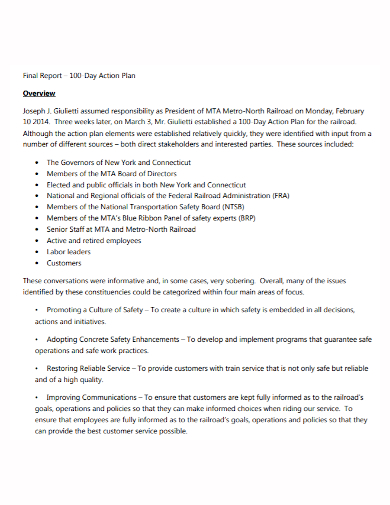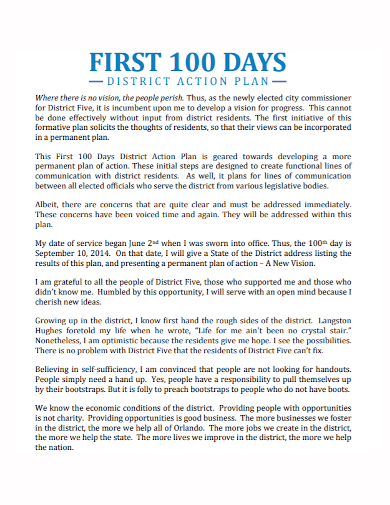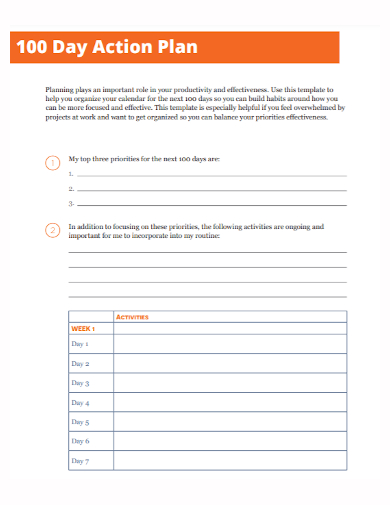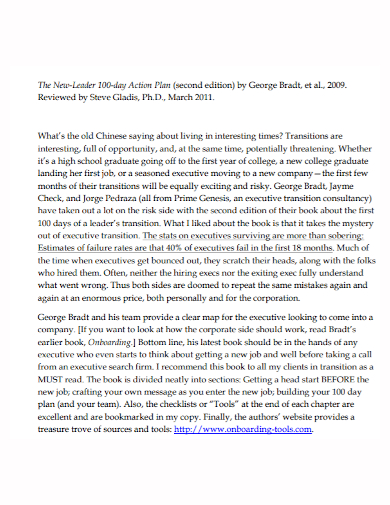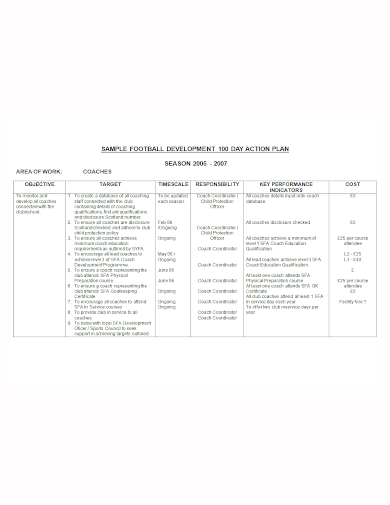Starting a new job can be both thrilling and intimidating, but planning your development can help you feel more assured. A 100-day plan can help you adjust to a new setting and communicate with your team successfully. Making a plan of action before starting a new job can help you minimize stress, stay focused, and be more productive. We explain what a 100-day plan is, why it’s important, and how to make one with an example in this post. The first hundred days in a new leadership position are crucial. They influence the outcome of your objective, your relationship with your new colleagues, and your career path. New leaders who “didn’t work out” have a high rate of turnover, and the consequences to individuals and their organizations are significant. If you have a complete onboarding plan, though, the odds are in your favor.
What is a 100-day action plan? When starting a new work, a 100-day plan is a document that you may use to define goals, develop organizational techniques, and track your progress. Personal and professional goals, as well as any other content you might wish to refer to while settling in, should all be included in your plan. A simple 100-day plan usually consists of a timeline with specific targets that you work on one by one. You can use pre-made plan templates or construct your own, depending on what works best for your strategy.
10+ 100 Day Action Plan Samples
1. 100 Day Action Plan Template
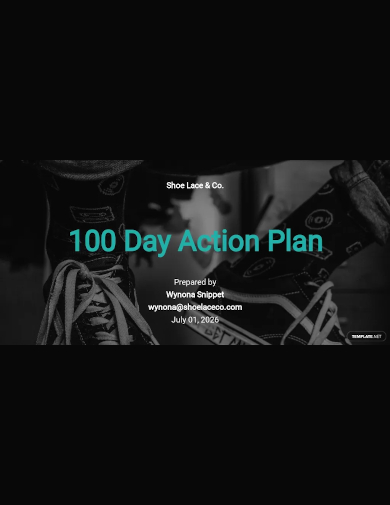
2. 100 Day Action Plan
3. Leaders 100 Day Action Plan
4. Executive 100 Day Action Plan
5. 100 Day Goals Action Plan
6. 100 Day Final Action Plan
7. First 100 Day Action Plan
8. Sample 100 Day Action Plan
9. New Leaders 100 Day Action Plan
10. Middle Class 100 Day Action Plan
11. 100 Day Development Action Plan
Creating A Plan For The First 100 Days In The Job
- Review the Job Requirements – Spend time researching corporate standards and job requirements before starting your new job so you know what to expect on your first day. Consider everything you learned during the interview process and make a list of any questions or concerns you have for your new boss.
- Do some thorough research – Do some study before your first day of work to learn more about the company’s aims, history, and values. Look at the company’s website to learn more about how the company got started and what its long-term objectives are. Researching your new employer’s definition and measurement of success might help you develop appropriate goals.
- Create a timeline – Create a timetable for your first 100 days so you can track your progress and create short-term goals. Set weekly and monthly goals, or divide 100 days into 30-60-90-day plans to construct a timetable.
- Set your goals – Setting goals relating to creating workplace relationships, boosting productivity, feeling comfortable, and becoming a successful employee should be the main focus of your 100-day plan. Begin by establishing a broad list of objectives. After that, sort them into the following groups:Focus on knowledge- and learning-based goals throughout your first 30 days on the job. This time can also be used to learn more about the organization and your role within it.
60-day goals: After the first month, concentrate on contribution goals. This section of your strategy should outline how you’ll put everything you’ve learned so far to good use and contribute to the company’s mission.
90-day goals: The final section of your 100-day plan should include goals for leadership and professional development. Consider establishing goals to help you prepare for any future leadership changes.Set goals that are specific, measurable, achievable, relevant, and time-based using the SMART technique.
FAQs
What are the tips for your first 100 days in a new job?
Listen to your coworkers: Talk to your coworkers and pay attention to what they have to say. Listening to your coworkers’ ideas and comments as you explore your new employment can teach you a lot.
Pose inquiries: When you’re confused about expectations or need clarification, ask questions to stay focused, productive, and involved. You can ask inquiries and clarify any points of doubt about your new position by contacting coworkers or managers.
Refer to the 100-day plan for more information: Refer to your 100-day plan to stay consistent and track your accomplishments as you transition to your new work.
Keep a growth mentality in mind: Prepare to revise and update your objectives as needed. Consider experimenting with different tactics to see what works best for you and then adjust your approach accordingly.
What is included in the 100-day plan?
- 30-day, 60-day, 90-day, and 100-day goals (or whichever time targets make sense for your organization)
- The ability to make changes if goals aren’t met or extra time is required.
- Goals and objectives are broken down at intermediate stages in a list.
- A strategy for setting goals and tracking progress.
- To achieve success, create a plan for staff performance assistance.
- Employees, managers, coworkers, and executives all have a say in the plan’s design.
- Plan your education to gain the knowledge and skills you’ll need.
- Learning where to go for answers (you don’t always need to know the answer; sometimes you simply need to know how to figure it out)
- Respect for the employee’s job experience and skills, as well as how to apply that knowledge in the new position
If you want to see more samples and formats, check out some 100-day action plan samples and templates provided in the article for your reference.
Related Posts
FREE 9+ 30-Day Marketing Plan Samples in PDF | MS Word | Apple Pages | Google Docs
FREE 3+ Sales Team Action Plan Samples in PDF | MS Word | Apple Pages | Google Docs
Marketing Plan For Small Business Samples
FREE 7+ Fashion Business Plan Samples in PDF
FREE 10+ Sprint Planning Samples In MS Word | Google Docs | PDF
FREE 10+ Wedding Planning Samples in MS Word | Apple Pages | Powerpoint | PDF
FREE 9+ Monthly Study Planner Samples in PSD | Illustrator | InDesign | PDF
FREE 9+ Sample Curriculum Planning Templates in PDF | MS Word
FREE 10+ Teacher Development Plan Samples in MS Word | Google Docs | Apple Pages | PDF
FREE 10+ Basketball Practice Plan Samples in PDF
FREE 12+ School Business Plan Samples in PDF | MS Word | Apple Pages | Google Docs
FREE 7+ Client Strategic Plan Samples in PDF | MS Word
FREE 11+ Trucking Business Plan Templates in PDF | MS Word | Google Docs | Pages
FREE 7+ Small Hotel Business Plan Samples PDF | MS Word | Apple Pages | Google Docs
FREE 14+ Bakery Business Plans in MS Word | PDF | Google Docs | Pages





